Proyek ini menunjukkan cara mengimplementasikan Glassware yang mendemonstrasikan fungsi utama Google Mirror API.
Untuk melihat demo yang berfungsi sepenuhnya dari proyek memulai cepat, buka https://glass-python-starter-demo.appspot.com. Jika tidak, baca terus untuk mengetahui cara men-deploy versi Anda sendiri.
Prasyarat
App Engine SDK untuk Python - Project mulai cepat Python diimplementasikan menggunakan App Engine. Anda perlu Python App Engine SDK untuk mengembangkan dan men-deploy project Anda. Jalankan penginstal jika sesuai dengan platform Anda, atau ekstrak file ZIP di tempat yang nyaman.
Membuat instance Google App Engine
Anda harus menghosting project mulai cepat pada instance Google App Engine:
- Buka http://appspot.com.
- Klik Create Application dan buat instance Google App Engine publik yang dihosting di
appspot.com. - Berikan ID Aplikasi ke aplikasi dan biarkan autentikasi Terbuka untuk semua Google Pengguna akun. Anda akan memerlukan ID aplikasi tersebut untuk mengonfigurasi project mulai cepat.
Membuat project Konsol API Google
Selanjutnya, aktifkan akses ke Google Mirror API:
- Buka konsol API Google dan buat project API baru.
- Klik Services, lalu aktifkan Google Mirror API untuk project baru Anda.
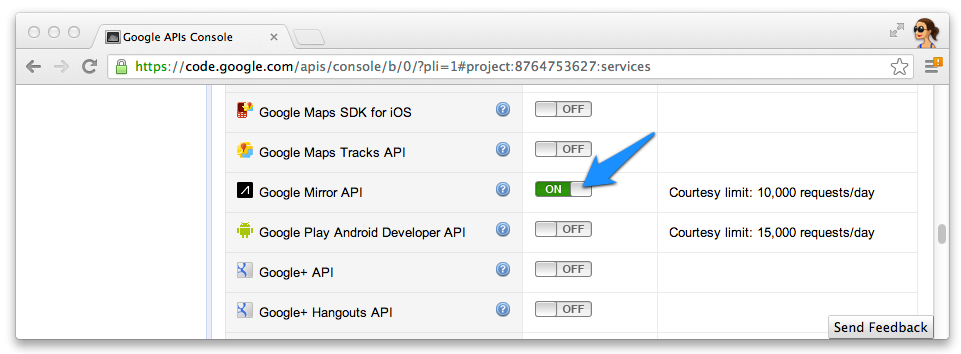
- Klik Akses API dan buat client ID OAuth 2.0 untuk aplikasi web.
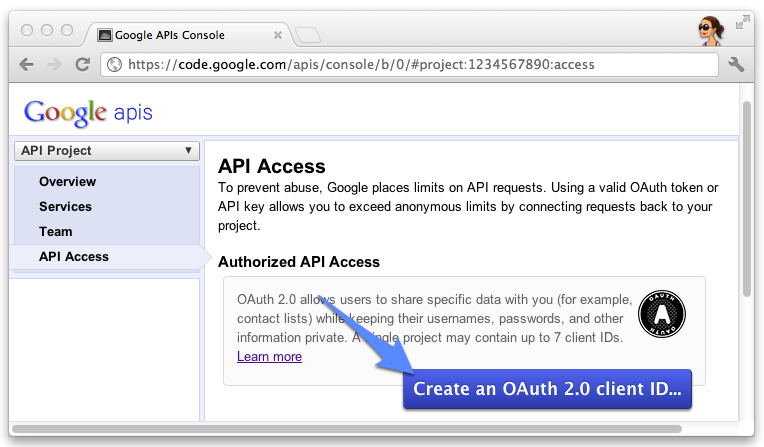
- Tentukan nama dan ikon produk untuk Gelas Anda. Kolom ini muncul di pemberian izin OAuth
yang ditampilkan
kepada pengguna Anda.
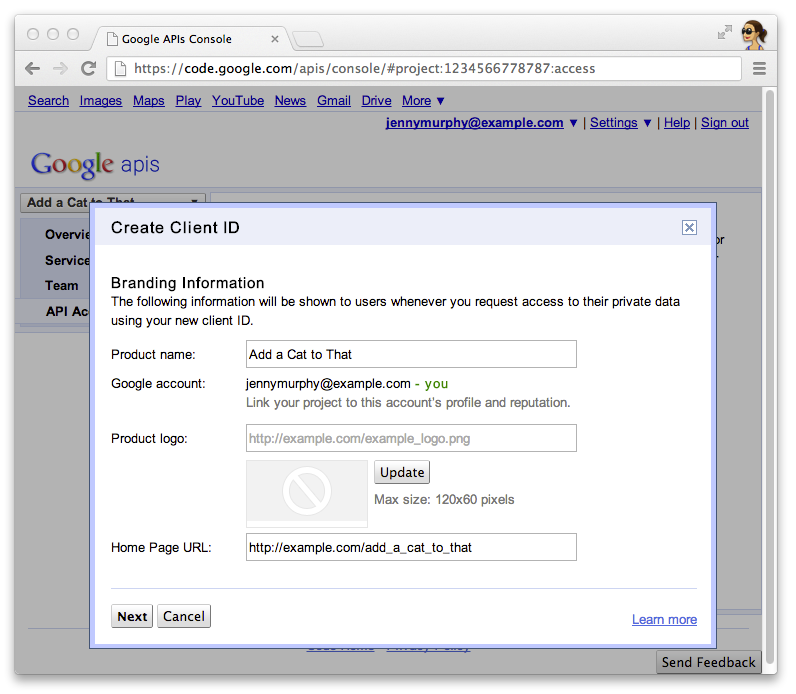
- Pilih Web application dan tentukan nilai apa pun untuk nama host, seperti
localhost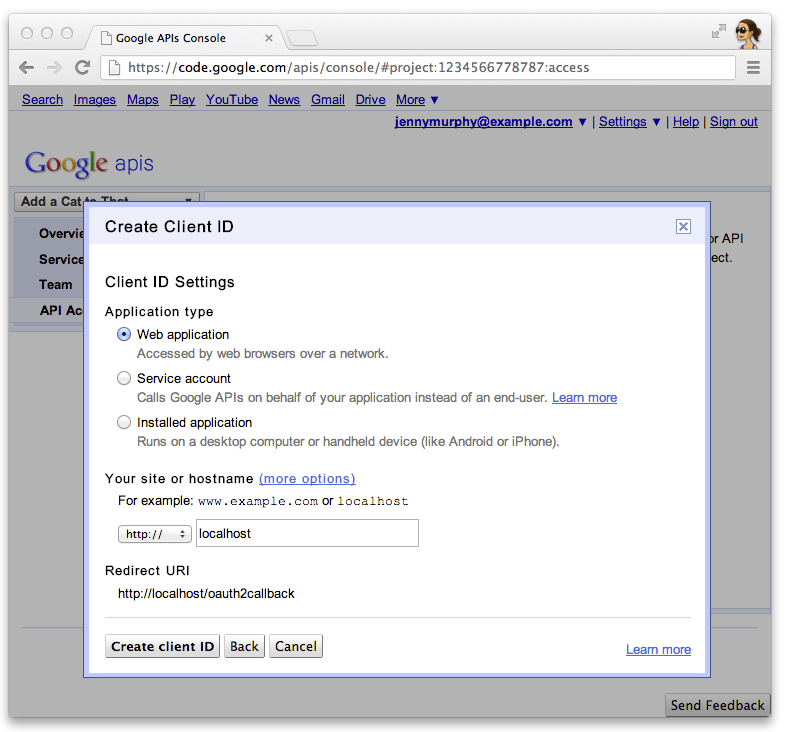
- Klik Edit settings... untuk client ID guna menentukan URI pengalihan. Menentukan
http://localhost:8080/oauth2callbackdan URL callback untuk App Engine Anda Misalnya,https://myappengineinstance.appspot.com/oauth2callback.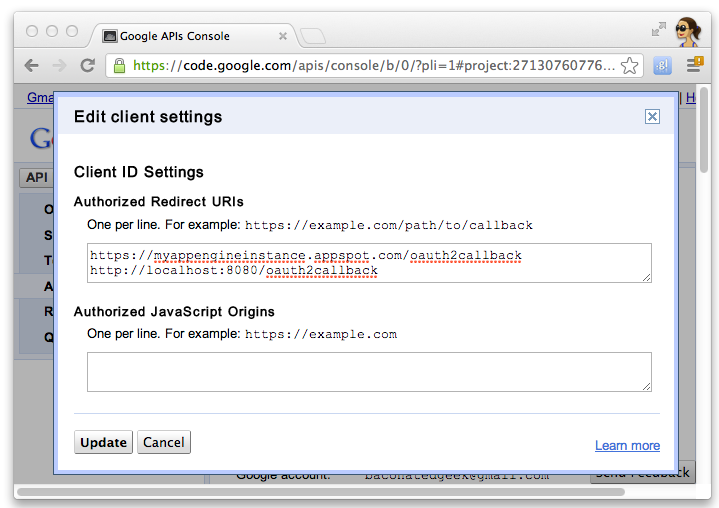
- Catat ID dan rahasia klien dari Konsol API Google. Anda akan memerlukan
untuk mengkonfigurasi proyek mulai cepat.
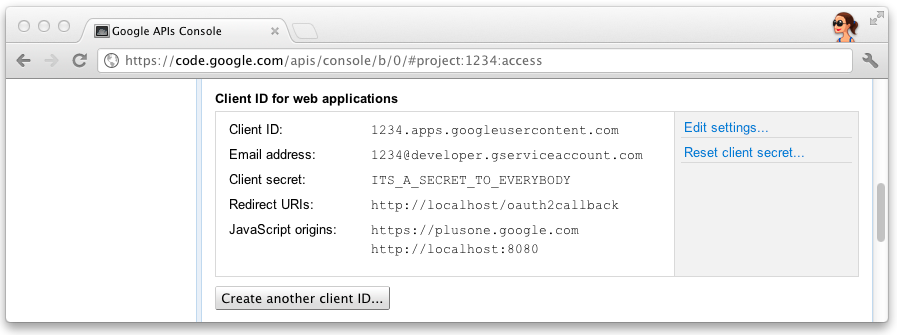
Mengonfigurasi project
Konfigurasikan project Mulai Cepat untuk menggunakan informasi klien API Anda:
- Masukkan client ID dan rahasia klien Anda di
client_secrets.json:{ "web": { "client_id": "1234.apps.googleusercontent.com", "client_secret": "ITS_A_SECRET_TO_EVERYBODY", "redirect_uris": [ ], "auth_uri": "https://accounts.google.com/o/oauth2/auth", "token_uri": "https://accounts.google.com/o/oauth2/token" } }
- Buat file
session.secretuntuk menyimpan cookie sesi:$ python -c "import os; print os.urandom(64)" > session.secret
- Edit
app.yamluntuk memasukkan ID aplikasi App Engine Anda:application: your_app_engine_application_id version: 1 runtime: python27 api_version: 1 threadsafe: true ...
Men-deploy project
Tekan tombol Deploy berwarna biru di antarmuka GUI Peluncuran App Engine atau jalankan shell ini untuk men-deploy kode Anda:
$ appcfg.py --oauth2 update .

